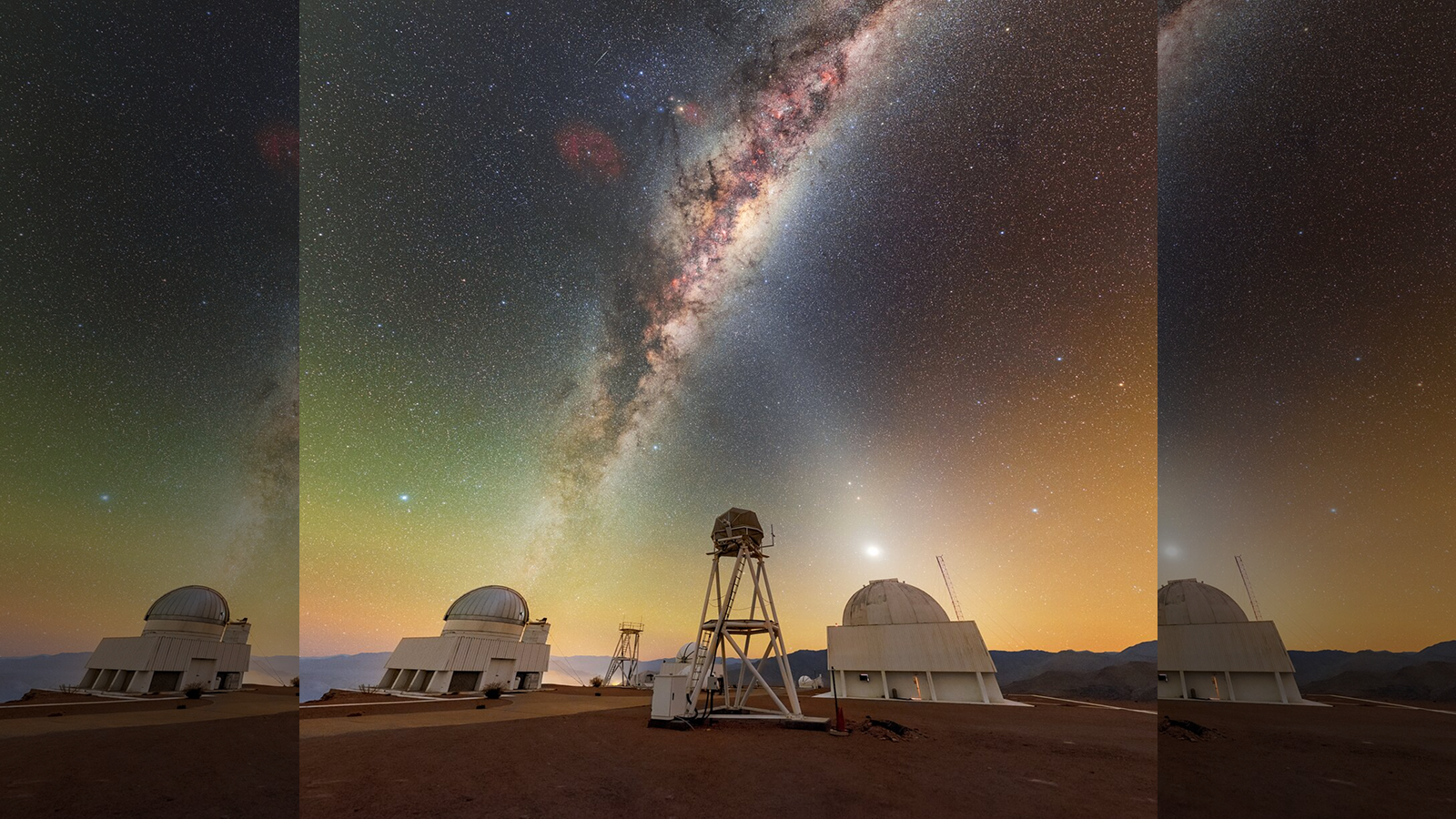QUICK FACTS
What it is: The luminous band of the Milky Way and the faint glow of zodiacal light
Where it is: Cerro Tololo Inter-American Observatory, Chile
When it was shared: Aug. 6, 2025
This stunning image from astrophotographer Petr Horálek captures two of the night sky’s most glorious sights in one — the glowing heart of the Milky Way and the elusive “zodiacal light.” Despite appearing alongside one another, these two streaks of light could not be more different in origin and composition.
Astronomers have constructed some of humanity’s best telescopes in the Southern Hemisphere to better see the bright core of the Milky Way — dense with stars and nebulae. That core passes through constellations including Scorpius, Sagittarius and Ophiuchus, which are higher in the sky the farther south they’re viewed from.
This image was taken at the Cerro Tololo Inter-American Observatory (CTIO), located at an altitude of 7,200 feet (2,200 meters) in the Chilean Andes within the southern Atacama Desert. At this height, above the densest and warmest part of Earth’s atmosphere, incredibly clear and dark skies are the norm, enabling observers to see not only the bright band of the Milky Way but something less obvious that resides in the solar system — zodiacal light.
The biggest visible solar system phenomenon in the night sky, zodiacal light is a faint, diffuse glow in the night sky that casual observers often miss. It consists of sunlight reflecting off dust in our cosmic neighborhood, possibly from passing asteroids and comets or from the leftovers of planet formation. In 2020, a paper also claimed that zodiacal light may be primarily made of dust blown off Mars. Either way, the glow of the solar system is an arresting sight, but hard to see.
Zodiacal light is at its brightest around the equinoxes and is visible along the ecliptic — the apparent path the sun takes through the sky — as a triangular beam of light on the horizon a few hours before sunrise or after sunset. That timing has led to it being called either the “false dawn” or “false dusk,” though its name comes from the fact that it’s visible over the 13 constellations that make up the zodiac.
Horálek’s spectacular image was taken in 2022 when he was an audiovisual ambassador for NOIRLab, which operates CTIO. In the photo, from left to right, are the U.S. Naval Observatory Deep South Telescope, the DIMM1 Seeing Monitor, the Chilean Automatic Supernova Search dome, the UBC Southern Observatory and the Planetary Defense 1.0-meter Telescope.
